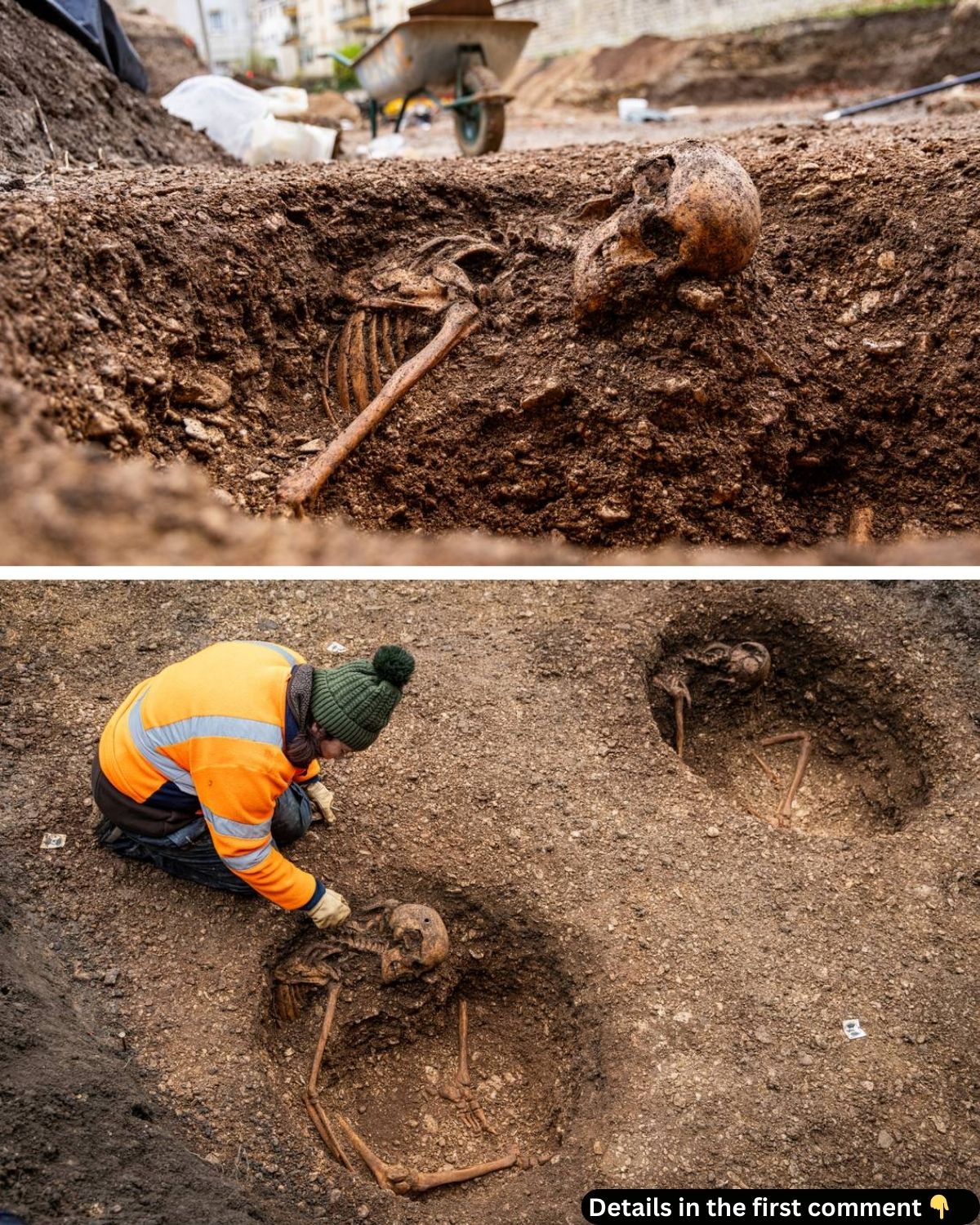In the heart of Dijon, France, a remarkable discovery is unfolding—one that sheds new light on ancient burial practices. During an excavation at a school construction site, archaeologists unearthed a series of seated Gallic burials dating back to the Iron Age. These uniquely arranged graves, each revealing an individual seated in an unusual position, offer fascinating insights into the customs of the time. With each discovery, questions about the individuals’ identities and the significance of these ritualistic burials continue to unfold.
The Unveiling of the Seated Burials
The discovery of seated burials is a rarity in archaeological excavations. In Dijon, 13 adult individuals were found buried in circular pits, each about three feet in diameter. The bodies were arranged in a uniform and symmetrical manner, with their backs resting against the eastern side of the pits and their heads facing west. Their arms were placed at their sides or on their pelvis, with legs bent to fit the limited space. This posture, seemingly deliberate, suggests a specific cultural or ritualistic meaning.

Unlike the typical burial practices of the La Tène period, which often involved the deceased being placed flat on their back or side, these seated positions raise questions about the customs surrounding death and the afterlife in ancient Gaul.
Video
Watch the video to explore the mysterious burial of bodies sitting upright and facing west over 2,000 years ago. This ancient practice raises intriguing questions about the past!
The Burial Structure and Arrangement
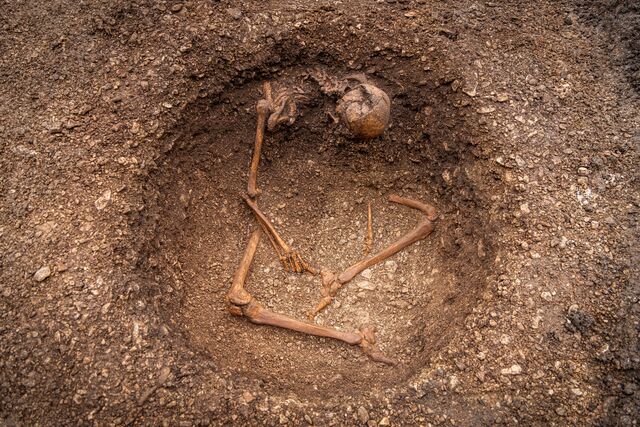
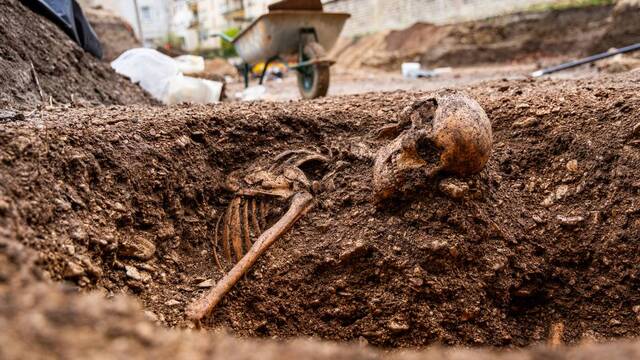
The graves were spaced evenly along a straight line, stretching approximately 80 feet in length. The circular shape of the pits and the consistent positioning of the bodies suggest a planned arrangement, possibly indicating a communal or ceremonial purpose. The repetition of the same burial pattern across multiple graves hints at a social or religious practice reserved for a particular group of people.
This method of burial—seated, with carefully arranged limbs and heads facing a specific direction—demonstrates the importance of ritual in the lives of these individuals. Such a burial technique is found in few other archaeological sites, making the Dijon discovery a rare glimpse into the funerary traditions of ancient Gaul.
Artifacts and Grave Goods

Unlike many other ancient burial sites, these graves yielded very few grave goods. In fact, only one item—a black stone armring—was found in association with one of the individuals. This armring, dating between 300 and 200 B.C., is a significant artifact, providing a glimpse into the material culture of the La Tène period. However, the absence of additional grave goods in the other graves raises important questions.

Why were these individuals not buried with the customary offerings of weapons, tools, or jewelry that often accompanied the dead in other Iron Age burials? The lack of grave goods could indicate the special status of the individuals interred, suggesting they may have been considered important figures in their community, and perhaps their importance transcended material wealth.
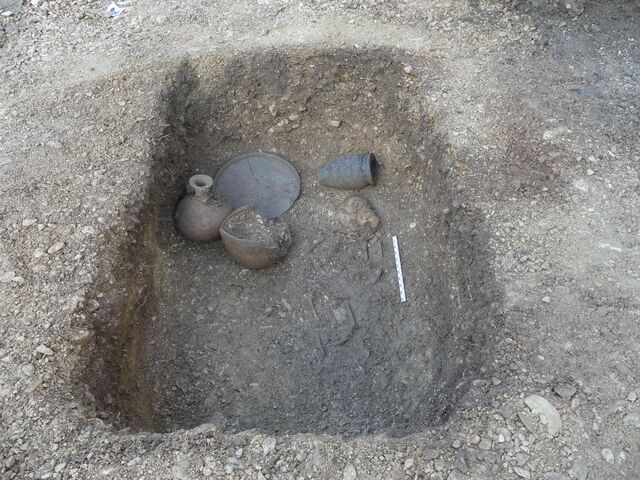
Possible Cultural and Religious Connections
The location of these burials is equally intriguing. The site was not located near a traditional necropolis or cemetery, but rather near what might have been a religious sanctuary or aristocratic dwelling. This suggests that the burial site was of particular significance, either to a social elite or to individuals involved in religious or ceremonial practices.
Throughout Europe, similar seated burials have been found near sacred spaces, such as temples or worship sites, indicating that these individuals may have had connections to religious rites or held a special role in their community. The exact nature of their status remains unclear, but it is possible that these individuals were part of a group that held spiritual or political importance.
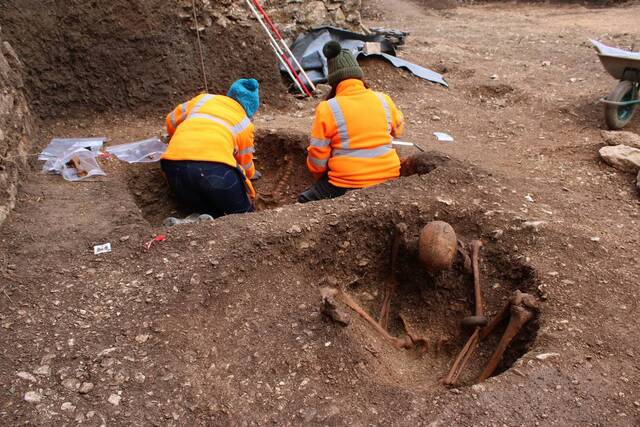
Similar Finds in Previous Excavations
The seated burial practice is not entirely unique to this site. In the 1990s, a nearby excavation revealed similar burials in circular pits, reinforcing the idea that these graves may have been part of a larger settlement or ceremonial area. This earlier find, which also included animal remains such as dogs, pigs, and sheep, hinted at the possibility of a nearby religious sanctuary.
The correlation between the two discoveries—both geographically and thematically—suggests that these sites were interconnected, perhaps representing a long-standing tradition of elite or religious burials in this region. The presence of animals, particularly in relation to human burials, also implies that these rites were linked to animal sacrifice or offerings as part of a larger ritual practice.
The Role of Animal Remains in the Excavation
The presence of animal skeletons in the vicinity of the seated burials is another fascinating aspect of this discovery. In addition to the human remains, archaeologists unearthed bones from dogs, sheep, and pigs, all of which were carefully placed in the vicinity of the graves.
The role of these animals in the burial site is still being debated, but it is likely that they were part of a ritual offering, possibly intended to accompany the deceased in the afterlife. In many ancient cultures, animals were sacrificed and placed in or near graves to serve as companions or to provide sustenance for the journey to the afterlife. The careful positioning of these animals suggests that they played an integral role in the funerary practices of the time, reinforcing the idea that this site was used for significant cultural or religious ceremonies.
What the Burial Method Tells Us
The distinctive seating arrangement of the burials, combined with the lack of grave goods and the presence of animal remains, suggests that these individuals may have been part of a select group within the society. The fact that they were buried in such a specific and uniform manner indicates that their burial was not only a personal affair but also one that carried cultural or ceremonial significance.
Could these seated burials represent a class of individuals with special status—perhaps warriors, religious leaders, or aristocrats? The precise nature of their role in society remains unknown, but the elaborate and deliberate nature of their burial positions suggests they were seen as important figures, whose deaths were marked by significant rituals.

Further Discoveries: A Later Gallo-Roman Necropolis
In addition to the seated burials, the excavation also revealed a later Gallo-Roman necropolis dating to the 1st century A.D. This later site, which contained the remains of 22 individuals—most of whom were very young children—offers further insight into the burial practices of the region.
Unlike the seated burials, the children were placed in typical Roman-style graves, either in wooden coffins or stone cists, which were common for Roman-era child burials. The discovery of these child burials serves as a reminder of the cultural shifts occurring in the region during the Roman conquest and the transition from Gallic to Roman customs.
The Broader Context of Iron Age France

This discovery in Dijon provides a valuable window into the culture and practices of the La Tène period in northern Gaul. It highlights the ways in which burial customs varied across different regions and periods, with some groups adhering to ancient traditions while others embraced new religious and cultural influences. The seated burials found here not only shed light on the funeral practices of a particular group but also offer a broader understanding of how the Gauls interacted with and adapted to changing social, political, and religious landscapes.
Conclusion: A Glimpse into the Past
The seated burials of Dijon provide a fascinating glimpse into the complex funerary practices of the La Tène period. Through careful excavation and analysis, archaeologists have uncovered a burial site that defies conventional expectations, offering new insights into the social and cultural life of ancient Gaul. As more discoveries are made at this site and others like it, we continue to deepen our understanding of the people who lived in this region long before the rise of the Roman Empire, reminding us of the enduring mysteries that still lie buried beneath our feet.
Video
Check out the video to see archaeologists in England unearth an Iron Age grave filled with a cache of incredible remains. This discovery offers a fascinating glimpse into ancient life!
